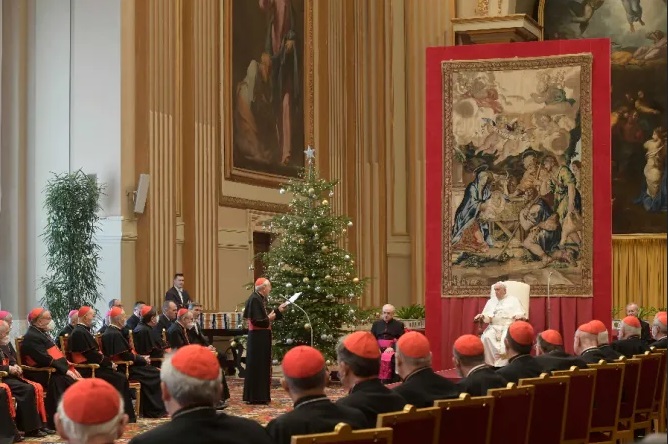The history behind Praedicate Evangelium
Francis was elected pope in 2013 with a mandate to reform the huge and inefficient Vatican bureaucracy. Soon after his election, he appointed a cabinet of cardinal advisors who have met regularly since then to help him write the document released on March 19.
Mar 25, 2022

Francis was elected pope in 2013 with a mandate to reform the huge and inefficient Vatican bureaucracy. Soon after his election, he appointed a cabinet of cardinal advisors who have met regularly since then to help him write the document released on March 19.
But beyond the “technical” reforms, the document is a faithful response to the three points Cardinal Jorge Mario Bergoglio outlined during the meetings leading up to the conclave that would elect him pope on March 13, 2013.
“Spiritual worldliness” is “the worst evil of the Church,” the Argentine prelate told the college of cardinals, according to a handwritten note published weeks later by the archbishop of Havana. The Church has the duty to “go out of itself” to evangelise the “peripheries, not only geographical, but existential.”
Before his election, Francis said that there are two images of the Church: that which is evangelising, which goes out of itself, listening to and proclaiming the Word of God, or that which is worldly, which lives in itself, of itself, for itself.
As Cardinal Marcello Semeraro, prefect of the Dicastery for the Causes of Saints pointed out, this was again picked up by Francis in the core document of his papacy, Evangelii Gaudium, published the year of his election, in which he called all structures of the church to be channeled towards evangelisation. As such, no reform of the curia would be possible without an “interior reform.”
Semeraro noted that in the Vatican constitution published by Pope Paul VI 1967, he broke with the principle observed since 1588 that curial offices were tied to the college of cardinals, and allowed diocesan bishops to be members of congregations. Francis is going forward, Semeraro said, by allowing lay women and men into these offices.
The writing process
Mellino said the first time the issue of a new constitution was formally suggested was in 2013, during one of the meetings of the council of cardinals.
“The papacy and the central structures of the universal Church need to heed the call to a pastoral conversion,” Melino said, quoting Francis’s Evangelii Gaudium.
In this spirit and with this intent, and with the help of the council of cardinals, the Pope discussed and reflected at length on this aspect, with the intention of proposing the revision of the Apostolic Constitution, Pastor Bonus, the bishop told reporters. He said Francis listened to the observations, opinions, suggestions, and requests of the heads of dicasteries of the Roman curia, meeting them personally in sessions of the Council of Cardinals, but also holding interdicasterial meetings. He also welcomed opinions and suggestions that came from local bishops.
“It is the fruit of an elaboration that has seen the accomplishment of various passages consistent with the principle of a ‘synodal Church that listens’,” the bishop said.
The bishops from around the world were heard in the process, Mellino said, and they are those who benefit the most from the reforms. — Crux







Total Comments:0